After putting together the first draft, a shift in perspective is required for a writer to iron out any wrinkles in their writing. For this reason, it's important that the writer puts on the mantle of an editor.
The task of an editor is similar to that of a fitness coach. An editor does for your writing what a fitness coach does for your fitness and general wellbeing. A trainer provides constant guidance - creating your exercise routine, checking your form, counting your reps, etc. Your coach sets you on the path to a fitter version of yourself. Similarly, an editor elevates your writing by pointing out your mistakes and showing you the right path.
The writer's inner editor views the written piece critically - cutting down any unnecessary parts or adding important details wherever necessary. This is a critical phase in writing, as it determines whether the piece has strayed from its path and consequently puts it back on track if it has.
You, as a writer, might overlook a lot of apparent mistakes, might make wrong stylistic choices, and might spend too much time on one topic giving too little attention to others. But you, as the editor, should look to prevent the story from becoming lopsided and remind yourself of the importance of consistency in flow, style, and structure.
Proper use of the English language, by adhering to the rules of grammar and punctuation, makes it easier for readers to understand what message you're trying to convey to them.
Some of the good practices of writing are: ending statements with a full stop, using question marks when asking a question, avoiding the abuse of ellipses (...), avoiding multiple exclamation marks (!!!) to show emphasis, etc.
Here's an article, written by our Founder, Sunil Sandhu, that outlines the good habits you can implement in your writing.
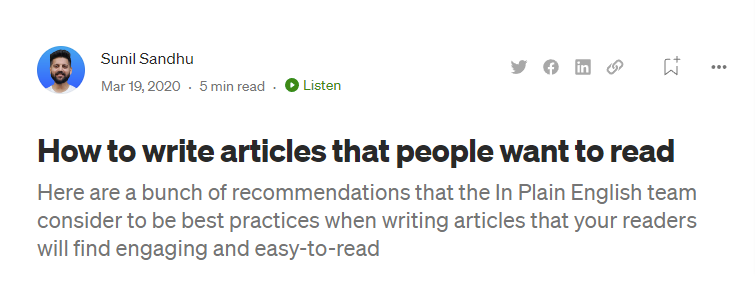
Given below are a few among many good practices that Sunil has compiled for the writers of In Plain English publications.
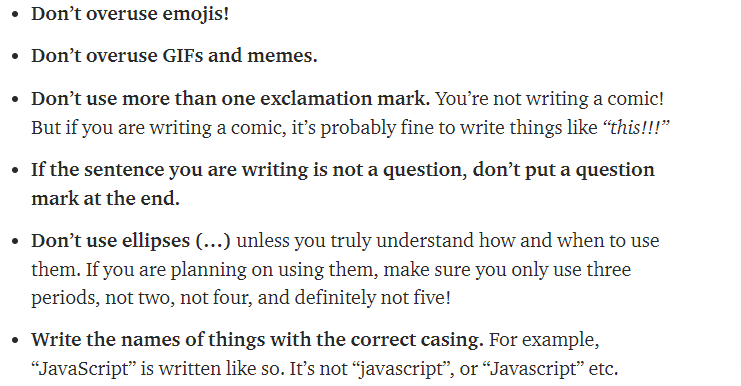
The use of emojis, GIFs, and memes has become a trend in modern blogs. But using these elements too liberally disrupts the writing, hampering the flow and thereby reducing the overall readability of the content. Thus, it's best to ensure that these are used in moderation or not used at all.
If you're writing content on a technical subject, it's important to get the terminology right. As a writer, you are the funnel that guides the flow of ideas and information to your readers. Thus, it's always your responsibility to propagate the correct ideas - in this case, the correct terminology.
Maintaining a proper flow enhances readability. In general, it's a good practice to break down your article into sub-parts, giving proper subheadings that outline the purpose of the paragraph. You can also break down bigger paragraphs into smaller ones as long walls of text might feel intimidating for readers.
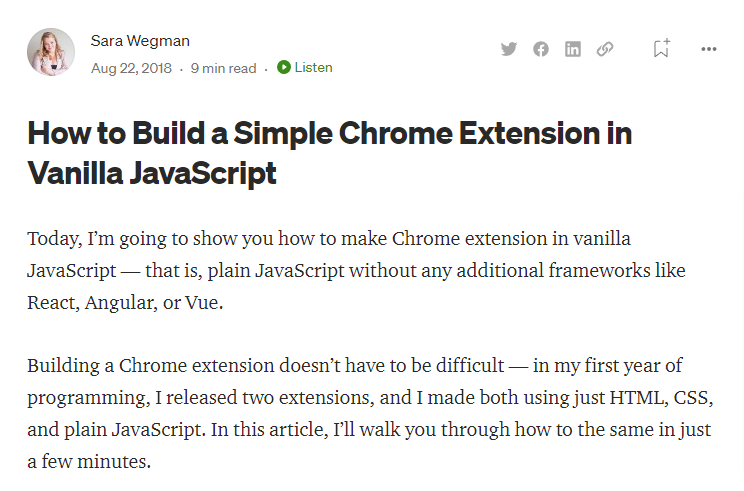
The title is self-explanatory, what follows is a brief introduction to what the author is setting up in the subsequent lines.
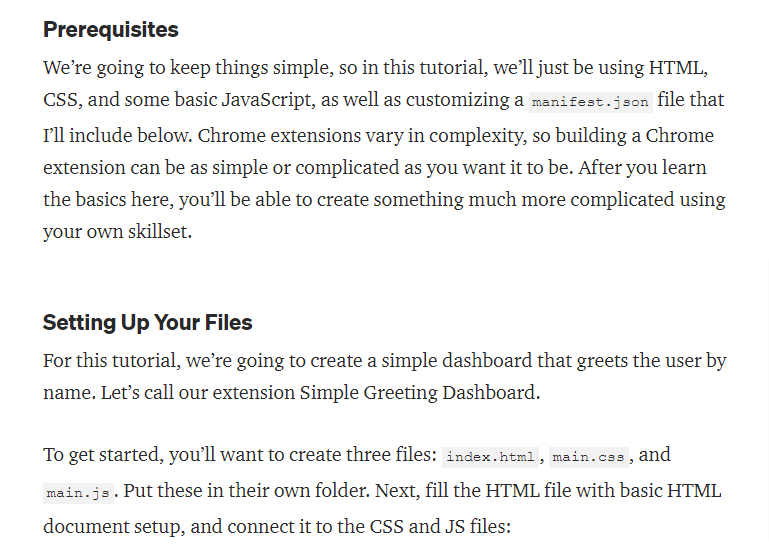
In short sub-sections, with appropriate subheadings, she breaks her core article down into small byte-sized paragraphs that are easy on the eye.
The author uses code blocks, images, and explanations to make her topic more comprehensible for the reader.
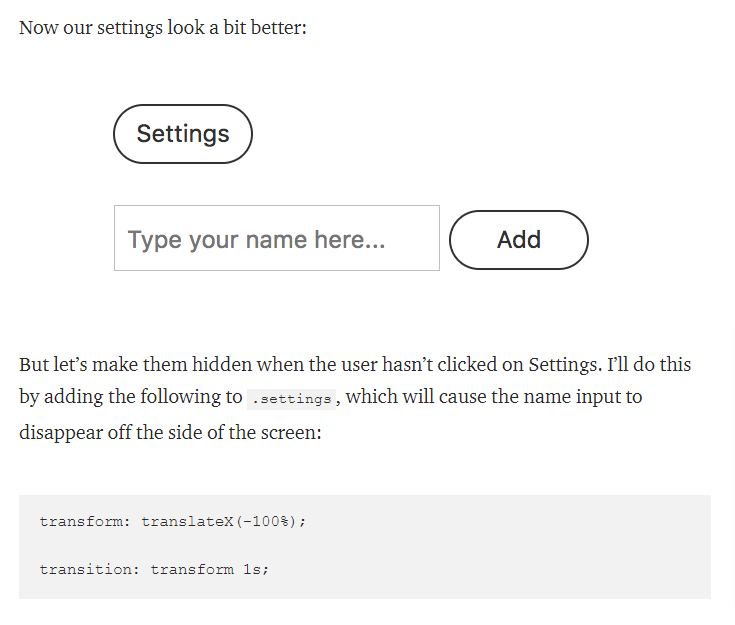
She also ensures that she's using the correct terms for the technologies she's naming in the article.

The article, "How to Build a Simple Chrome Extension in Vanilla JavaScript" is a 9-minute read and the author has maintained consistency in style, form, and structure throughout. Sara's article, like many other technical articles in our publications, sets the benchmark for technical writing.
Besides being mindful of the grammar, punctuation, style, and flow of a story the editor should also take care that the writer doesn't delve into plagiarism. If the stylistic choices lend validity to your writing then quotes and citations lend credibility to your written piece.
For instance, you might have overlooked using quotation marks or might have forgotten to cite sources when you're quoting someone or using text from other sources. This might seem trivial, but it isn't. The writing can get flagged for plagiarism and lose its value. The editor's task is to remind you that proper citation is of utmost importance. It not only lends strength and credibility to the writing but also connects your writing to the wider field of the subject. Should your readers want to explore the broader spectrum or go deeper into the topic, having access to your source will let them do that.
Your target is to provide satisfying answers to your readers who have come to you with their queries - your writing coupled with your sources will help in achieving that purpose.
To lend more emphasis to your point, it's important to go the extra mile by incorporating examples and analyses for the quotes you use in your writing. You should put forward your take on the lines spoken by another.
Imagine you're the tour guide taking your readers through a museum tour. When you show them ancient artefacts, you ought to also fill them in on the history behind each object. Without this background, the objects merely remain beautiful relics of the past - their significance is lost on the viewers.
Quoting a source, thus, is only a part of the equation - explanations and examples enrich your story by giving it background and a firm pedestal to stand upon. Your readers will benefit from this and get a thorough understanding of the topic you're explaining.
While quoting sources, you should also be aware that, if there are multiple authors contributing to your point, you need to give credit to all of them missing out on none.
To summarise, be mindful of the following points when you're quoting sources or incorporating another author's ideas in your piece:
- Don't copy directly without including quotation marks and/or citations.
- Don't just replace the original words with synonyms if you're taking inspiration from the source text.
- Don't use the same sentence structure as the source.
- Don't summarise ideas without proper citation.
Let's take the example of citing sources in the context of a technical article.

This is a topic for React-Redux developers. And we will see below how the author, Hristijan Stevanoski, has integrated into his article a quote from the official documentation with his explanation to help the reader get a firm grasp of the concept he's put forward.
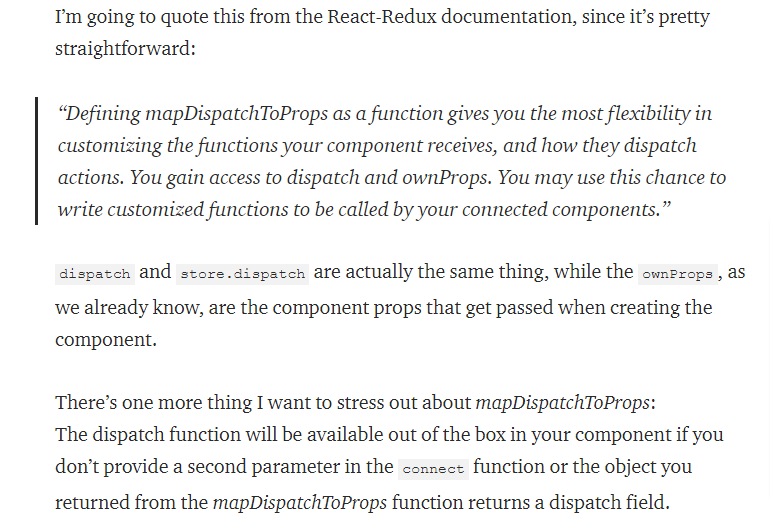
As shown below, he has also dropped a link to the source material (in this case, the official documentation) to help out those seeking more information about React-Redux development.

In general, it's good practice to give credit (naming sources or dropping links) where it's due. After all, you're using someone's idea to build your story upon. And it also helps out readers who are looking to broaden their horizons.
A well-written article might fall by the wayside if it doesn't present the information in an accessible way. Or it might end up drawing ire if it lacks proper citation. This is why it's a good idea to spend some time inspecting your article under the lens of an editor.
Read part four here.
